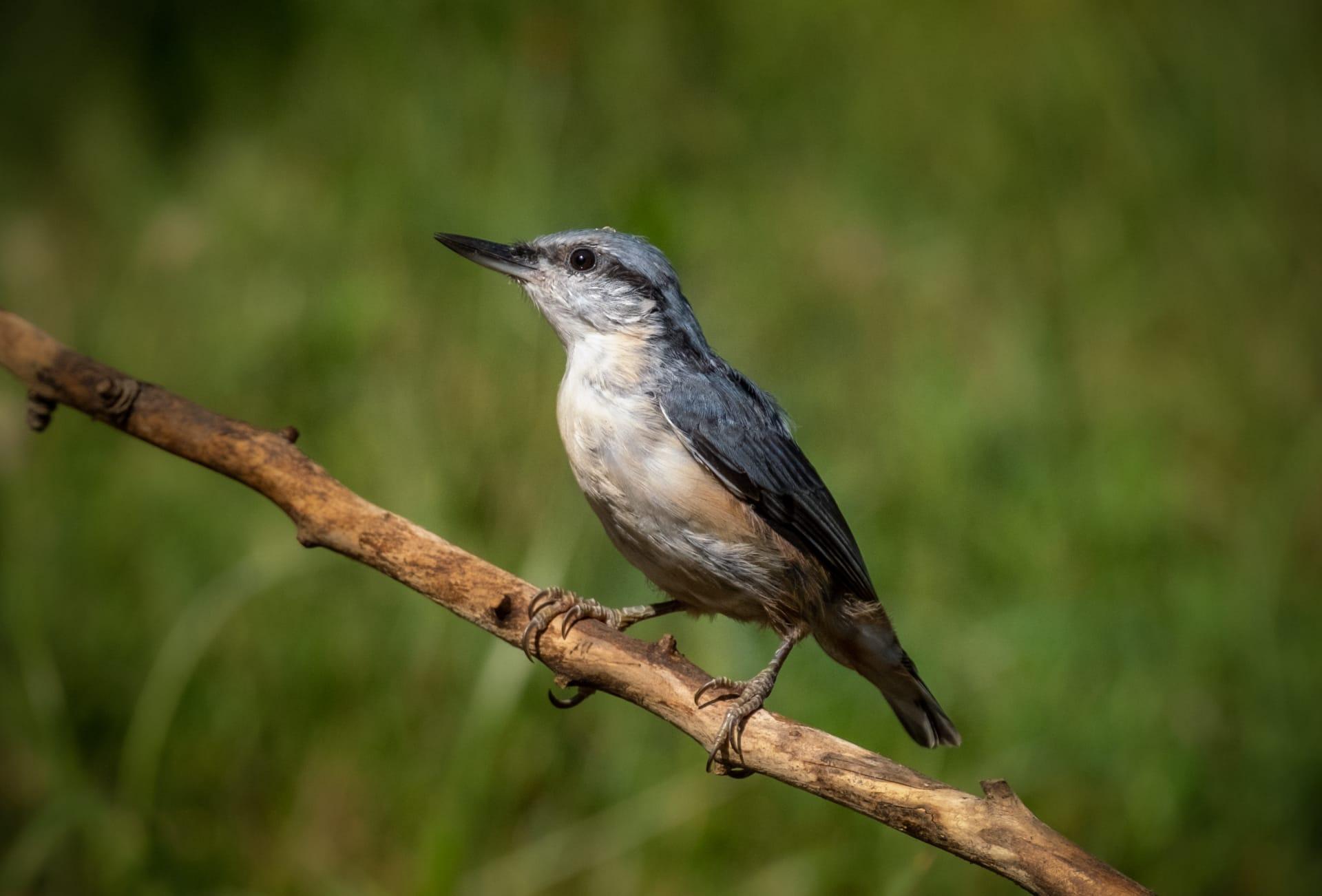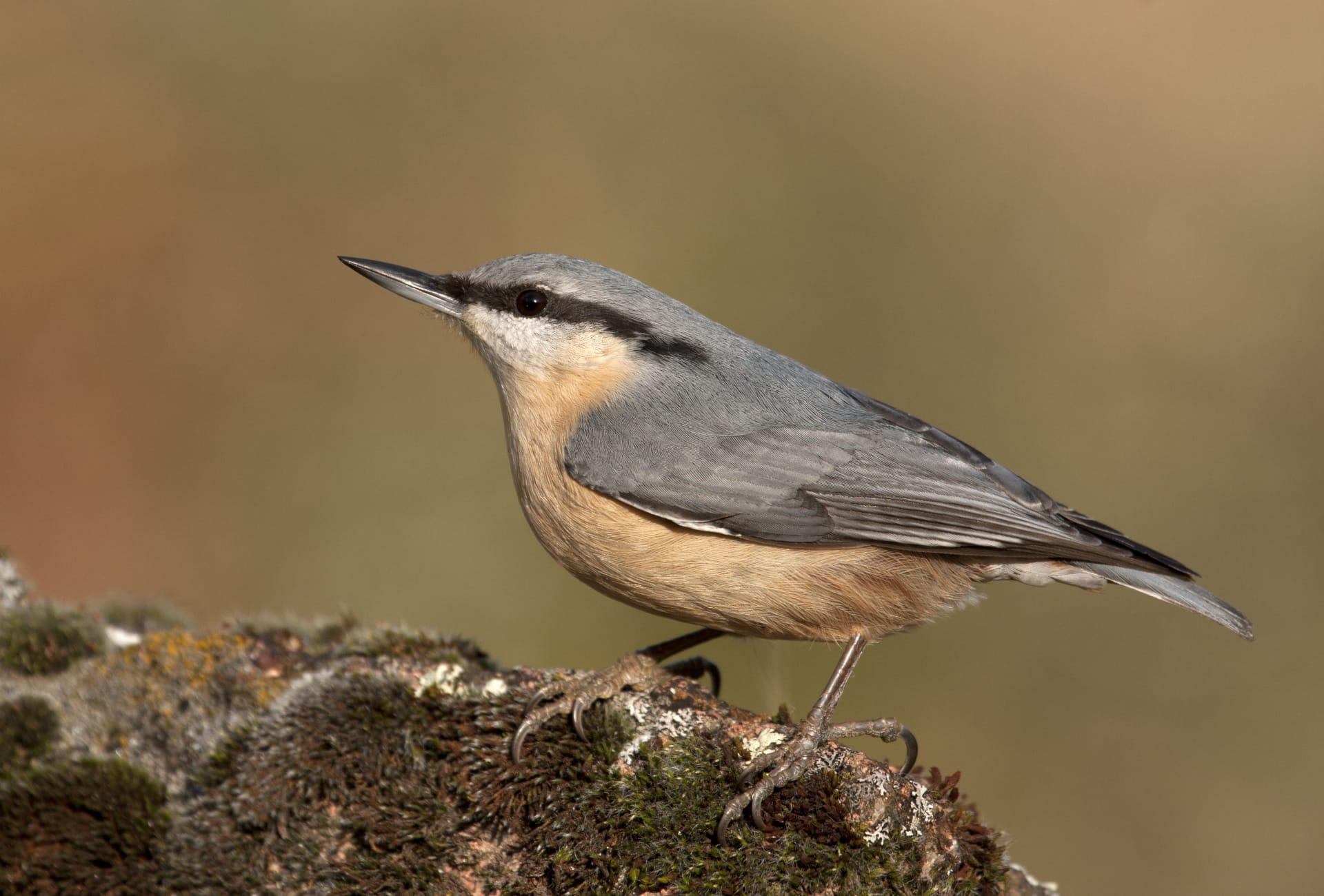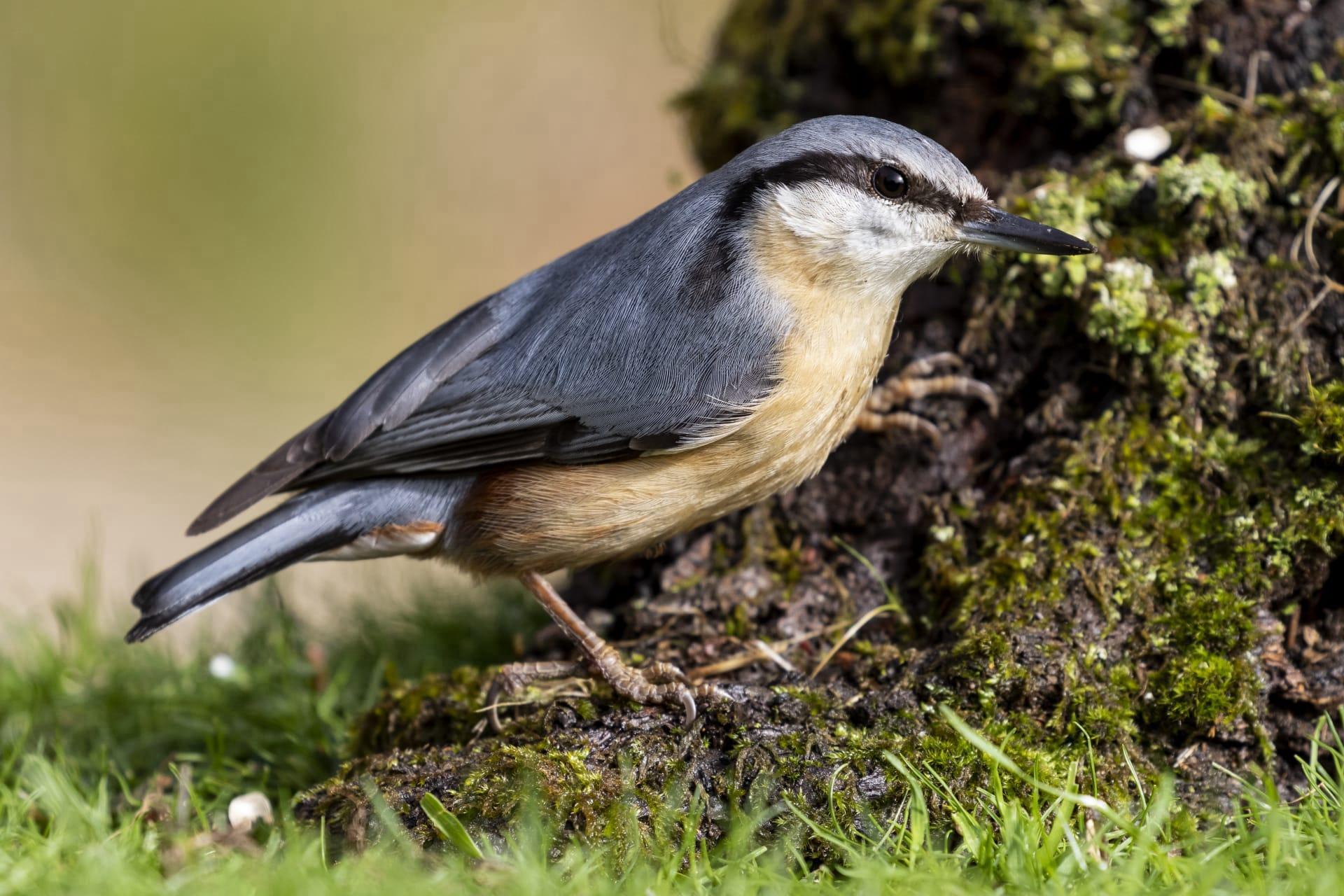1
Nuthatches are unique in their ability to move headfirst down trees. Unlike woodpeckers and creepers that usually go upwards, nuthatches can effortlessly scale down. This distinctive movement is thanks to their strong rear toes and short legs, allowing them to maneuver easily on tree trunks and branches. Their ability to descend headfirst helps them uncover food sources like insects and seeds missed by others.
Another interesting fact about nuthatches is their use of tools, a rare behavior among birds. They are known to use pieces of bark or wood chips to pry insects from tree crevices. This tool use demonstrates a level of problem-solving ability. Studies have shown that nuthatches can also remember the locations of hundreds of food caches, often storing seeds and nuts under tree bark.

2
Nuthatches have a distinct vocal range, including a variety of whistles, trills, and calls. Their most common call sounds like a sharp "ank-ank," helping them communicate with each other, especially during mating season. Researchers have found that their songs vary regionally, almost like dialects, indicating a complex and sophisticated vocal communication system.
These birds are also known for their ability to adapt to different habitats. While they predominantly reside in deciduous and mixed forests, nuthatches can thrive in urban and suburban areas. This adaptability extends to their nesting habits. They often use natural tree cavities or abandoned woodpecker holes and are known to plaster the entrance with mud to reduce the size, a unique behavior among North American birds, which enhances protection from predators.

3
Nuthatches have a remarkable feeding technique during winter. They hoard food in autumn, storing seeds and nuts in tree bark crevices. This behavior, known as "caching," helps them survive the harsh winter months when food is scarce. Their spatial memory is impressive, as they accurately relocate their hidden caches even under a blanket of snow.
Another intriguing aspect is their role in forest ecology. Nuthatches help control insect populations, especially those that are harmful to trees. By feeding on insects like beetles and caterpillars, they contribute to maintaining a healthy forest ecosystem. Additionally, their habit of foraging dead wood for insects aids in the decomposition process, further supporting forest health.

4
Nuthatches display a fascinating social behavior known as "mobbing." When a predator is spotted, they emit loud alarm calls, attracting other nuthatches and even different bird species to join in harassing the predator. This collective defense strategy helps deter potential threats. It's a vivid display of avian cooperation and communication.
During breeding season, nuthatches exhibit strong pair bonds. Pairs often remain together throughout the year, not just during breeding. They engage in mutual preening and share food, reinforcing their bond. This level of partnership is somewhat rare among small passerine birds, highlighting their unique social structure.

5
The White-breasted Nuthatch, a common species in North America, has an interesting physical adaptation. Their legs are shorter than most birds, allowing for more efficient movement on tree trunks and branches. This adaptation aids in their distinctive headfirst descent and enables them to navigate bark crevices for food with remarkable agility.
Nuthatches play a crucial role in seed dispersal. The seeds they don't retrieve from their caches often germinate, contributing to forest regeneration. This inadvertent act of planting helps in the spread of various tree species, particularly those like oaks and pines, whose seeds they commonly cache. This ecological contribution underscores the importance of nuthatches in their natural habitats.